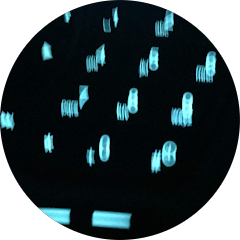pressure, water heating, cylinder, thermostat, water pressure, annual service, heater repair, hot water cylinder service, shower, water heater maintenance, water heater service, inspection, central heating, heating system
How to repair a damaged hot water cylinder element?
Repairing a damaged hot water cylinder element involves first isolating the power supply, draining the cylinder, and then carefully removing the faulty element. Replace it with a new one, ensuring all connections are secure before restoring power and refilling the cylinder.
What causes hot water cylinder corrosion?
Hot water cylinder corrosion is primarily caused by factors such as water quality, temperature, and the presence of oxygen. These elements can lead to the breakdown of the cylinder's materials, resulting in leaks and reduced efficiency.
How to diagnose unvented cylinder valve leaks?
Diagnosing unvented cylinder valve leaks involves checking for water pooling around the cylinder, inspecting the pressure relief valve for dripping, and listening for unusual sounds. If any signs are present, consult a professional for further assessment.
What are the safety concerns with unvented cylinder repairs?
The safety concerns with unvented cylinder repairs include the risk of high-pressure water release, potential for scalding, and the need for proper installation to prevent leaks or bursts. Always ensure repairs are conducted by qualified professionals.
How long does hot water cylinder repair take?
The duration of a hot water cylinder repair typically takes between one to three hours, depending on the complexity of the issue and the specific type of cylinder being serviced.
Can a faulty thermostat cause unvented cylinder problems?
A faulty thermostat can indeed cause unvented cylinder problems. It may lead to incorrect temperature regulation, resulting in inadequate hot water supply or overheating, which can damage the cylinder and affect overall system performance.
What are the benefits of regular hot water cylinder servicing?
The benefits of regular hot water cylinder servicing include improved efficiency, extended lifespan, and reduced risk of breakdowns. Routine maintenance ensures optimal performance, helping to save on energy costs and prevent costly repairs in the future.
What are the signs of a leaking hot water cylinder?
The signs of a leaking hot water cylinder include visible water pooling around the unit, damp spots on walls or ceilings, a decrease in water pressure, and unusual sounds such as dripping or hissing.
How do I fix a leaking hot water cylinder?
A leaking hot water cylinder can often be fixed by identifying the source of the leak, tightening loose fittings, or replacing faulty components like the thermostat or pressure relief valve. If the issue persists, it's best to consult a professional.
What are the signs of hot water cylinder failure?
The signs of hot water cylinder failure include inconsistent water temperature, unusual noises, leaks around the cylinder, and a decrease in water pressure. If you notice any of these symptoms, it may be time to seek professional assistance.
What is the role of a thermal cutout in cylinder repair?
The role of a thermal cutout in cylinder repair is to act as a safety device that prevents overheating. It automatically shuts off the power supply to the heating element when the water temperature exceeds safe levels, protecting the cylinder and ensuring safe operation.
What is the average cost of unvented cylinder repairs?
The average cost of unvented cylinder repairs typically ranges from £150 to £300, depending on the complexity of the issue and the parts required. Always consult a professional for an accurate quote tailored to your specific situation.
What are the common signs of unvented cylinder repair is required?
The common signs that unvented cylinder repair is required include unusual noises, leaks, inconsistent hot water supply, and a drop in water pressure. If you notice any of these issues, it's essential to contact a professional for assessment.
What is the importance of hot water cylinder maintenance?
The importance of hot water cylinder maintenance lies in ensuring efficiency and longevity. Regular maintenance helps prevent breakdowns, reduces energy costs, and ensures safe operation, ultimately providing reliable hot water for your home or business.
How often should an unvented hot water cylinder be serviced?
Unvented hot water cylinders should be serviced at least once a year to ensure optimal performance and safety. Regular maintenance helps prevent potential issues and prolongs the lifespan of the unit.
How often should I service my hot water cylinder?
The frequency of servicing your hot water cylinder is crucial for optimal performance. It is recommended to service your hot water cylinder at least once a year to ensure efficiency and to prevent potential issues.
What are common hot water cylinder faults?
Common hot water cylinder faults include leaks, inadequate heating, strange noises, and pressure issues. These problems can arise from wear and tear, faulty components, or improper installation, necessitating professional assessment and repair.
What is the average lifespan of a hot water cylinder?
The average lifespan of a hot water cylinder is typically between 10 to 15 years, depending on factors such as maintenance, water quality, and usage. Regular servicing can help extend its longevity.
What causes corrosion in unvented hot water cylinders?
Corrosion in unvented hot water cylinders is primarily caused by the presence of oxygen in the water, high temperatures, and the accumulation of sediment. Additionally, poor maintenance and lack of anode protection can accelerate the corrosion process.
How can I prevent hot water cylinder leaks?
Preventing hot water cylinder leaks involves regular maintenance checks, ensuring proper insulation, and promptly addressing any signs of wear or corrosion. Additionally, installing a pressure relief valve can help manage excess pressure and reduce leak risks.
What maintenance is needed for unvented cylinders?
The maintenance needed for unvented cylinders includes regular inspections, checking the pressure relief valve, and ensuring the expansion vessel is functioning properly. It is also important to flush the system periodically to prevent sediment buildup.
How to identify a faulty thermostat quickly?
Identifying a faulty thermostat quickly involves checking for inconsistent temperature readings, unresponsive controls, or if the heating system fails to turn on or off as expected. Additionally, listen for unusual clicking sounds, which may indicate malfunction.
What tools are required for cylinder repairs?
The tools required for cylinder repairs include a wrench set, screwdrivers, pipe cutters, pliers, and a pressure gauge. These tools ensure effective diagnosis and repair of hot water cylinders, maintaining their efficiency and safety.
How to improve hot water cylinder efficiency?
Improving hot water cylinder efficiency involves regular maintenance, insulating the cylinder and pipes, and setting the thermostat to an optimal temperature. Additionally, consider upgrading to a more efficient model if your current system is outdated.
What are the risks of DIY cylinder repairs?
The risks of DIY cylinder repairs include potential safety hazards, such as gas leaks or electrical issues, improper installations leading to water damage, and voiding warranties. Professional expertise ensures safe and effective repairs, protecting your property and investment.
How to check for hot water cylinder faults?
Checking for hot water cylinder faults involves inspecting for leaks, unusual noises, or inconsistent water temperature. Additionally, verify that the pressure relief valve operates correctly and check the thermostat settings for accuracy.
What is the process for cylinder element replacement?
The process for cylinder element replacement involves first isolating the power supply and draining the cylinder. Next, the old element is removed and replaced with a new one, followed by refilling the cylinder and restoring the power supply.
How to ensure safe unvented cylinder operation?
Ensuring safe unvented cylinder operation involves regular maintenance, proper installation by qualified professionals, and the use of safety devices like pressure relief valves. Regular checks can prevent overheating and pressure buildup, ensuring optimal performance.
What are the signs of thermostat malfunction?
The signs of thermostat malfunction include inconsistent temperatures, the heating or cooling system not turning on or off, and a display that is unresponsive or inaccurate. These issues can indicate that your thermostat needs repair or replacement.
How to extend the lifespan of hot water cylinders?
Extending the lifespan of hot water cylinders involves regular maintenance, such as flushing the tank to remove sediment buildup, checking the anode rod annually, and ensuring proper insulation. Additionally, scheduling professional inspections can help identify issues early.





























